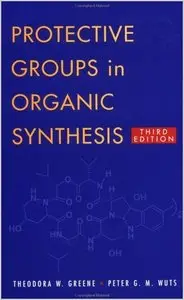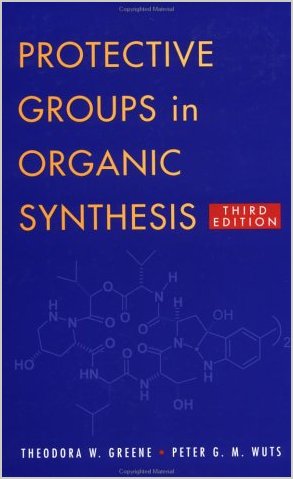Protective Groups in Organic Synthesis by Theodora W. Greene
Publisher: Wiley-Interscience; 3 edition (May 15, 1999) | ISBN: 0471160199 | Pages: 816 | PDF | 8 MB
Publisher: Wiley-Interscience; 3 edition (May 15, 1999) | ISBN: 0471160199 | Pages: 816 | PDF | 8 MB
Reflecting the latest advances in protective group methodology, this Third Edition of the proven laboratory reference is expanded by more than 50%, providing readers with a comprehensive compendium of 1,050 of the most useful protective groups as well as 5,350 references to original publications. Protective groups are organized by six major organic functional groups: hydroxyl, amino, carboxyl, carbonyl, sulfhydryl, and phosphate groups (the last new to this edition). Also added in this edition are protection of the alkyne-CH, expanded coverage of protection of all groups, and many new enzymatic methods of protection and deprotection. Each chapter briefly describes the classes of available protective groups, followed by an in-depth look at the chemistry of individual protective groups, their properties, and the best methods of formation and cleavage. Ten reactivity charts with more than 28,000 entries summarize the relative reactivities of 270 commonly used protective groups with 108 reagents. This book will be an indispensable reference for synthetic chemists and students.
Editorial Review
I rate "Protective Groups in Organic Synthesis" as very successful: On the one hand the book combines a vast number of functional groups and their protection groups with different methods for protecting and deprotecting, on the other hand stability data to a variety of protection groups are summarized in tabular form. The methods were presented in a short form, which are supplemented with appropriate references.
The present book is very comprehensive, and one will meet very rarely a synthesis problem to which no solution, in form of a of protection group, is present. For this reason, this book should be present in any synthesis laboratory.
Contents
The Role of Protective Groups in Organic Synthesis.
Protection for the Hydroxyl Group, Including 1,2- and 1,3-Diols.
Protection for Phenols and Catechols.
Protection for the Carbonyl Group.
Protection for the Carboxyl Group.
Protection for the Thiol Group.
Protection for the Amino Group.
Protection for the Alkyne-CH.
Protection for the Phosphate Group.
Reactivities, Reagents, and Reactivity Charts.



